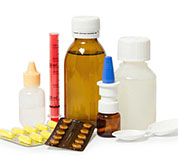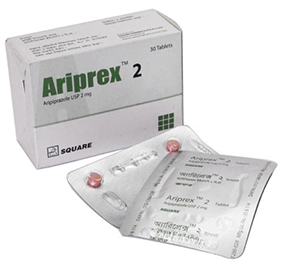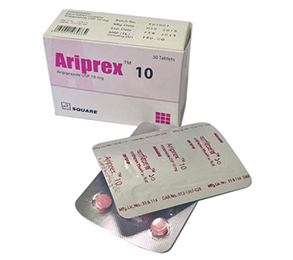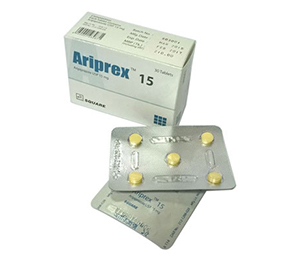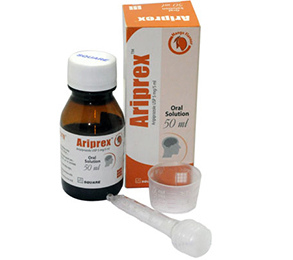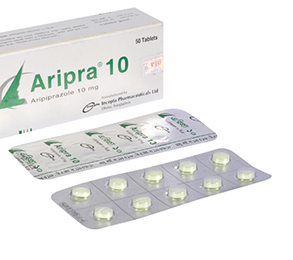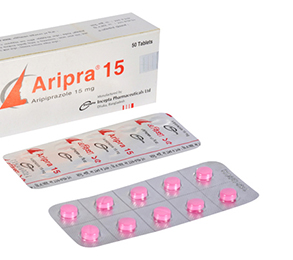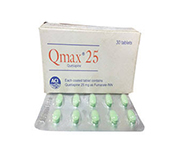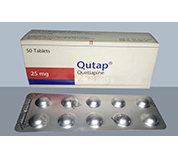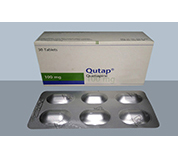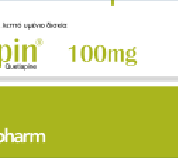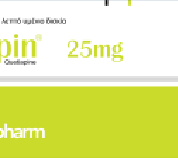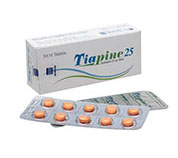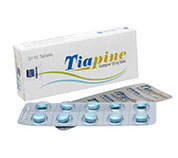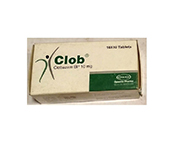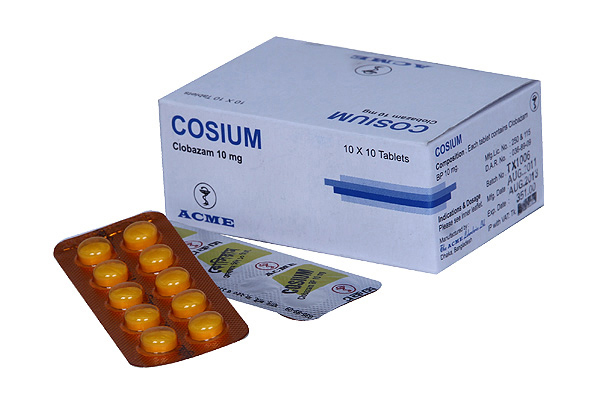Metocol Syrup 5 mg/5 ml 1 Pcs
Alternative products
Metoclopramide Hydrochloride
Indications
Intubation of the small intestine, Premedication for radiologic examination of the upper gastrointestinal tract, Prophylaxis of chemotherapy-induced nausea and vomiting, Nausea and vomiting associated with cancer chemotherapy or radiotherapy, Diabetic gastric stasis, Gastro-oesophageal reflux disease, Diabetic gastric stasis, Prophylaxis of postoperative nausea and vomiting
Pharmacology
Metoclopramide blocks dopamine receptors and in higher doses, it also blocks serotonin receptors in chemoreceptor trigger zone of the CNS. It enhances the response to acetylcholine of tissue in upper GI tract causing enhanced motility and accelerated gastric emptying w/o stimulating gastric, biliary, or pancreatic secretions. It also increases lower esophageal sphincter tone.
Dosage
Oral-
Gastroesophageal Reflux: Administer Reglan continuously or intermittently:
- Continuous: Administer 10 to 15 mg, 30 minutes before each meal and at bedtime (maximum of 60 mg per day) for 4 to 12 weeks.
- Intermittent: Single doses up to 20 mg prior to provoking situation.
Acute and Recurrent Diabetic Gastroparesis: Administer 10 mg, 30 minutes before each meal and at bedtime (maximum of 40 mg per day) for 2 to 8 weeks.
Dosage Adjustment in Specific Populations: For gastroesophageal reflux and acute and recurrent diabetic gastroparesis, in patients with moderate or severe hepatic or renal impairment, and cytochrome P450 2D6 (CYP2D6) poor metabolizers.
Injection-
For the Relief of Symptoms Associated with Diabetic Gastroparesis (Diabetic Gastric Stasis). If only the earliest manifestations of diabetic gastric stasis are present, oral administration of metoclopramide may be initiated. However, if severe symptoms are present, therapy should begin with metoclopramide injection (IM or IV). Doses of 10 mg may be administered slowly by the intravenous route over a 1 to 2 minute period.
Administration of Metoclopramide Injection, up to 10 days may be required before symptoms subside, at which time oral administration of metoclopramide may be instituted. The physician should make a thorough assessment of the risks and benefits prior to prescribing further metoclopramide treatment.
For the Prevention of Nausea and Vomiting Associated with Emetogenic Cancer Chemotherapy Intravenous infusions should be made slowly over a period of not less than 15 minutes, 30 minutes before beginning cancer chemotherapy and repeated every 2 hours for two doses, then every 3 hours for three doses.
The initial two doses should be 2 mg/kg if highly emetogenic drugs such as cisplatin or dacarbazine are used alone or in combination. For less emetogenic regimens, 1 mg/kg per dose may be adequate.
For doses in excess of 10 mg, Metoclopramide Injection, should be diluted in 50 mL of a parenteral solution. The preferred parenteral solution is Sodium Chloride Injection (normal saline), which when combined with Metoclopramide Injection, can be stored frozen for up to 4 weeks.
Metoclopramide Injection, is degraded when admixed and frozen with Dextrose5% in Water. Metoclopramide Injection, diluted in Sodium Chloride Injection, Dextrose5% in Water, Dextrose 5% in 0.45% Sodium Chloride, Ringer's Injection, or Lactated Ringer's Injection may be stored up to 48 hours (without freezing) after preparation if protected from light. All dilutions may be stored unprotected from light under normal light conditions up to 24 hours after preparation. If acute dystonic reactions should occur, inject 50 mg diphenhydramine hydrochloride intramuscularly, and the symptoms usually will subside.
For the Prevention of Postoperative Nausea and Vomiting Metoclopramide Injection, should be given intramuscularly near the end of surgery. The usual adult dose is 10 mg; however, doses of 20 mg may be used. To Facilitate Small Bowel Intubation. If the tube has not passed the pylorus with conventional maneuvers in 10 minutes, a single dose (undiluted) may be administered slowly by the intravenous route over a 1 to 2 minute period.
The recommended single use is:
- Pediatric patients above 14 years of age and adults: 10 mg metoclopramide base.
- Pediatric patients (6 to 14 years of age): 2.5 to 5 mg metoclopramide base;
- Pediatric patients (under 6 years of age): 0.1 mg/kg metoclopramide base.
* চিকিৎসকের পরামর্শ মোতাবেক ঔষধ সেবন করুন'
Administration
Should be taken on an empty stomach. Take ½ hr before meals.
* চিকিৎসকের পরামর্শ মোতাবেক ঔষধ সেবন করুন'
Interaction
Antagonistic effect with anticholinergics and morphine derivatives. Potentiation of sedative effects with CNS depressants. Additive effect with other neuroleptics on the occurrence of extrapyramydal disorders. May increase the risk of serotonin syndrome with serotonergic drugs (e.g. SSRIs). May decrease digoxin bioavailability. May increase ciclosporin bioavailability. May prolong the neuromuscular blocking effect of mivacurium and suxamethonium. Increased exposure levels with strong CYP2D6 inhibitors (e.g. fluoxetine). May reduce plasma concentration of atovaquone.
Contraindications
GI haemorrhage, mechanical obstruction or GI perforation; confirmed or suspected pheochromocytoma; history of neuroleptic or metoclopramide-induced tardive dyskinesia; epilepsy, Parkinson's disease; history of methaemoglobinaemia with metoclopramide or of NADH cytochrome-b5 deficiency. Concomitant use with levodopa or dopaminergic agonists.
Side Effects
Extrapyramidal symptoms (usually acute dystonic reactions); parkinsonism; tardive dyskinesia; restlessness, drowsiness, dizziness, anxiety, confusion, tremor; hallucinations (rare); depression w/ suicidal ideation; hypotension, HTN, GI disturbances, dyspnoea, visual disturbances, urinary frequency and incontinence, headache; hypersensitivity reactions (rash, bronchospasm, angioedema); galactorrhoea or related disorders; blood disorders; transient increase in plasma-aldosterone concentration. IV: Cardiac conduction disorders, transient flushing of face and upper body (high dose).
Pregnancy & Lactation
Category B: Either animal-reproduction studies have not demonstrated a foetal risk but there are no controlled studies in pregnant women or animal-reproduction studies have shown an adverse effect (other than a decrease in fertility) that was not confirmed in controlled studies in women in the 1st trimester (and there is no evidence of a risk in later trimesters).
Precautions & Warnings
Patients with underlying neurological conditions, cardiac conduction disturbances, uncorrected electrolyte imbalance, bradycardia. Renal and hepatic impairment. Elderly, childn. Pregnancy and lactation.
Overdose Effects
Symptoms: Extrapyramidal disorders, drowsiness, decreased level of consciousness, confusion, hallucination, cardiorespiratory arrest.
Management: Symptomatic treatment with continuous monitoring of CV and resp functions. In case of extrapyramidal symptoms, treatment is symptomatic (benzodiazepines in childn and/or anticholinergic antiparkinsonian medicinal products in adults).
Therapeutic Class
Anti-emetic drugs, Prokinetic drugs
Storage Conditions
Store between 20-25°C. Protect from light.
- Type Syrup
- Tag
- Morbi leo risus
- Porta ac consectetur ac
- Vestibulum at eros



